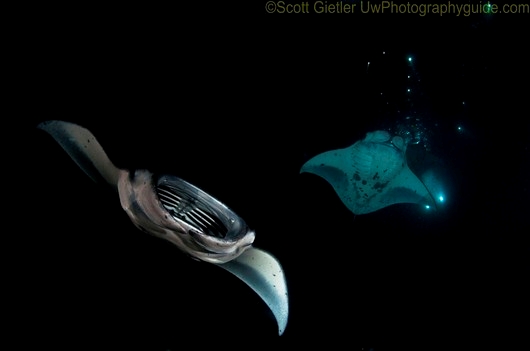Tips for Underwater Photography on Night Dives
Aug 04
Underwater photography is an exciting venture, but when the sun goes down, a whole new world of possibilities awaits. Night dives offer a unique opportunity to capture the mesmerizing beauty of nocturnal marine life. However, venturing into the darkness can be challenging for photographers. Don’t fret, though! We’ve compiled some valuable tips to help you master the art of underwater photography on night dives:
- Master Your Equipment: Before embarking on a night dive, ensure you are completely familiar with your camera and underwater housing. Operating your gear smoothly in low light conditions is crucial for capturing stunning shots. Practice adjusting settings blindfolded, so you can make adjustments efficiently even without looking.
- Choose the Right Camera Settings: In the darkness of the underwater world, light is scarce, and using the right camera settings is paramount. Opt for a wide aperture (low f-stop number) to allow more light into the camera sensor. Lower your shutter speed to let in enough light but beware of motion blur. Increase your ISO gradually to achieve a balance between exposure and noise.
- Focus on Illumination: Carry powerful underwater lights or strobes to illuminate your subjects effectively. Lighting is key to bringing out the colors and details of the marine life you’re capturing. Position the lights strategically to avoid harsh shadows and create a natural-looking environment.
- Respect Marine Life: Nighttime is when marine creatures come alive. Remember to be a responsible photographer and avoid causing stress to the subjects you encounter. Use non-invasive techniques to approach and photograph marine life. A red focus light can be beneficial to preserve the natural behavior of nocturnal species.
- Be Patient and Observant: Night dives can be challenging, but the rewards are worth the effort. Take your time and observe the behavior of underwater creatures. Patience will lead to unique photo opportunities, such as hunting or mating behaviors that are rarely seen during the day.
- Look for Contrast: During night dives, the contrast between light and darkness plays a vital role in creating compelling images. Position yourself to capture interesting silhouettes or subjects illuminated by ambient light against the dark backdrop. Play with shadows and highlights to add drama to your compositions.
- Mind Your Buoyancy: Underwater photographers are prone to getting carried away in the pursuit of that perfect shot. Remember to maintain excellent buoyancy control, as disturbances to the bottom can kick up sediment, reducing visibility and potentially harming delicate marine life.
- Experiment with White Balance: Different light sources can affect the color of your photos underwater. Experiment with your camera’s white balance settings to achieve accurate and vibrant colors. Custom white balance can be particularly useful in ensuring natural-looking images.
- Tell a Story: Every photograph has a story to tell through its composition. Focus on capturing the unique behavior and interactions of marine life during night dives. A series of images that showcase the nocturnal world can be a compelling narrative that engages your audience.
- Post-Processing Magic: Once you’re back on dry land, don’t forget to fine-tune your underwater night photographs during post-processing. Adjust the exposure, contrast, and color balance to bring out the best in your images.
With these tips in mind, you’ll be ready to embark on a captivating adventure into the mysterious realm of underwater night photography. Remember, practice makes perfect, and the more you explore this fascinating world, the more breathtaking images you’ll capture. So dive in, be patient, and let the magic of the night unfold before your lens.
Capture incredible underwater images on night dives with the latest underwater photography gear from the Bluewater Photo Store.
Looking for your next dive destination? Contact the experts at Bluewater Travel to plan your next holiday!
Learn about photographing the unique phenomenon of biofluorescence here.
Read about photography in the Maldives here.





Related Articles
Popular Articles